Understanding Gravity: The Contributions of Galileo, Newton, and Einstein
Gravity is one of the forces of nature through which objects are known to be influenced within the universe. From elements to galaxies and planetary systems, there is nothing outside the realm of gravity that governs most of the actions within the universe. Recognition of the role of gravity becomes crucial in cases that are compatible with physics and astronomy, engineering, and the existential experience. Gravity concepts for all practical purposes go back to thousands of years.
Definition
Essentially, gravity can be described as the force that pulls two objects towards each other from two distinct entities. The force of this attraction is directly proportional to their masses and inversely proportional to the square of the space between the two.
Mathematical Expression:
This relationship can be summed up in Isaac Newton’s law of universal gravitation, which states:
F = G * ( m1 * m2) / r2
Where:
F = The attraction between two objects due to gravitational force.
G = The gravitational constant which is equal to 6:67 x 10^⁻¹¹ m³ / kg * s^². 67 × 10-11 N⋅m2/kg2
The mass of the first object(also designated as, m1).
The mass of the second object(also designated as, m2).
r = The quantity without which there is no displacement of an object with respect to another.
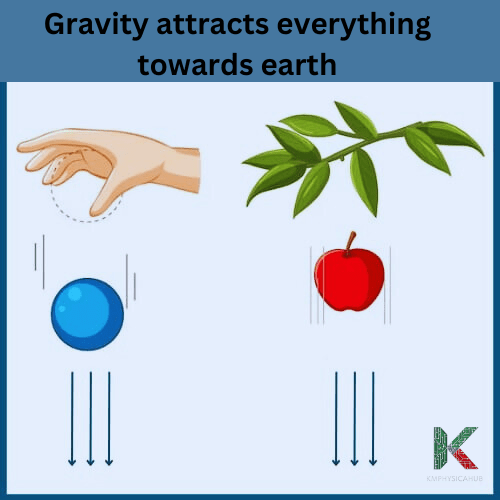
Properties of Gravity
Universal: Gravity is a force that applies to all objects with mass or energy and it doesn’t matter how distant they may be.
Attractive: Gravity can only be a force of attraction, whereby the items in question are drawn together. In fact, there is not even a sort of “anti-gravity” which pulls objects away from each other.
Infinite Range: The gravity has certainly infinite range, that is it extends in all the directions whether it is along the longitudinal or the vertical, lateral axis and then decreases with distance and as well has been an attraction of an infinite origin with no central point.
Evolution of Gravity from Antiquity to Modern Era
Antiquity and Classical Antiquity:
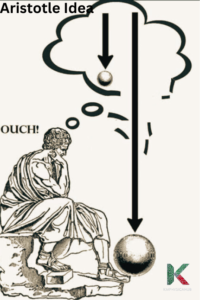
Heraclitus of Ephesus (c. 535–475 BCE) employed the term ‘logos’ to identify the cosmic order, the harmony and the movement of the universe, and all objects at the same time.
Leucippus, a classical atomist, harmonized the contention that the cosmos evolved through atomic vorticity, minor atoms as celestial bodies, larger atoms for Earth.
To illustrate this, Aristotle sought to understand that objects that are submerged within a certain medium will fall at a rate that is proportional with its weight and inversely related to the density of the medium.
Middle Ages and Renaissance:
The concept of gravity was further modified in the 6th century CE after John Philoponus with the theory of impetus.
Thus, in the beginning of the eighth century, the Indians, particularly Bhraahmagupta, briefly mentioned that Earth has a tendency to attract everything to it.
Jean Buridan and Albert of Saxony in the 14th century started the significant ideas on impetus, relating it to acceleration and mass.
The fundamental idea of gravity was proposed by Galileo Galilei in the seventeenth (17th) century.
Newtonian Era:
Sir Isaac Newton provided his law of universal gravitation in the middle of the seventeenth century elucidating planetary orbits. Newtonian mechanics lasted up to the period of the early twentieth century.
Einstein’s Theory of Relativity:
In 1865 Maxwell launched his electromagnetic theory, and in 1915, general theory of relativity was proposed by Albert Einstein on the basis of Maxwell’s theory . It defines the gravity to be the curving of space and time by the presence of matter. The masses travel in the geodesic paths within spacetime curvature planes. From ancient Greek philosophy to Einstein’s breakthrough, our understanding of gravity has evolved significantly!
Galileo’s Views About Gravitation
While science today is vast, it was Galileo Galilei who brought great change to the way the universe was studied and explained through experimentations and hypotheses. His views on gravitation laid foundations in the field of physics not only advancing it but also preparing for the further innovations.
Early Life and Discoveries:
This phenomenal scientist was born on February 15, 1564 in Pisa, Italy and was known to have developed interest in mathematics and natural philosophy at a tender age. From his youthful initiation in mechanics and astronomy, which he developed as a major pioneering field, he forged the way forward.
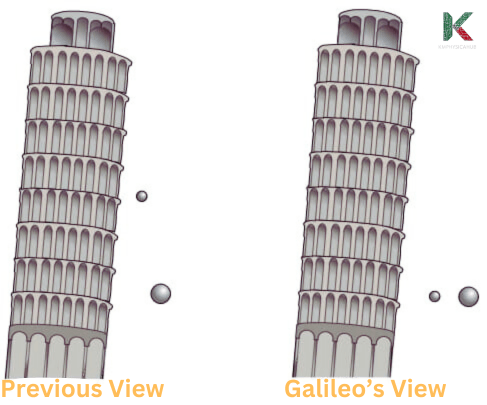
Galileo’s Experiments:
One of the most famous endeavors of the scientist is considered the experiment with the free fall of objects with different mass from the height of the Leaning Tower of Pisa. With the help of the falling bodies’ movement, he came to discover that all the falling bodies only fall without any regard to the relative mass of the object in question.
-
Law of Falling Bodies:
Galileo formulated the law of falling bodies whereby when falling freely, it does not matter how heavy or light the objects are, they will experience the same amount of acceleration due to gravity. The precise observation and difference in the speed of falling bodies countered the Aristotle’s logic on the subject.
-
Inclined Plane Experiment:
Still using his first conservation law, Galileo was able to advance his ideas about motion through the inclined plane experiment. He was able to examine how acceleration depends on the angle of inclination through tests that involved letting balls roll down inclined planes of different angles.
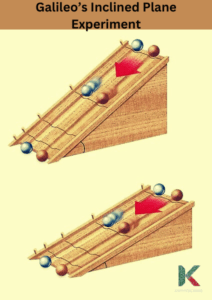
-
Views on Free Fall and Gravity:
Galileo further postulated that free-fall is inherent in matter and this falls under the pull-of-gravity force of the earth that also leads to weightlessness. As his contribution, he pointed the direction for future scientists to build and elaborate on the subject of gravitational attraction.
Opposition and Conflict:
However, in his career as a scientist, Galileo encountered a lot of opposition from the Catholic Church due to his support of the heliocentric model of the universe and his attack on the traditional Ptolemaic system. This conflict eventually led to his trial by the Inquisition.
Legacy of Galileo’s Work:
By focusing on empirical evidence and a rigorous system of mathematical analysis, Galileo revolutionized the scientific approach with generations to follow. The contributions made to physics and astronomy have provoked further research into the understanding of the universe.
Comparison with Newton’s Law of Universal Gravitation:
Although Galileo’s views on gravitation were foundational, Isaac Newton’s law of universal gravitation expanded and refined the understanding of gravity. Galileo’s work provided a crucial early step toward Newton’s revolutionary theory.
Galileo’s Place in Scientific History:
Despite the progress made in the application of mechanics and mathematical methods after the works of Newton, Galilei remains central to our understanding of physics and scientific investigation. His contribution in the prediction and knowledge of motion and gravity greatly assists the theory of physics up to date.
Continued Relevance in Modern Science:
Today, it is impossible to imagine any branch of science, astrophysics and astronomy in the first place, space research and exploration, meteorology, materials’ science and engineering without applying Galil’s approaches and contributions as a base. This explains why researchers to this day, continue to learn from his ideologies, as well as his methodologies, in an effort to solve modern day problems.
Galileo’s Influence Beyond Gravity:
Even though, Galileo is famous for his work on gravity, he makes contributions as a mechanical, astronomer and a methodologist. This is especially evident in his policies as well as his accomplishment which shows the broadness of his knowledge and creativity.
Celebrating Galileo’s Achievements:
Today people are aware of his achievements through Museums, Education Institutions, and Scientific events such as the International Year of Astronomy in 2009 federally endorsed by UNESCO. It is very important that he remains timeless, his name is more than just a name; it embodies curiosity and the thirst for knowledge.
Debunking Common Myths:
Due to possible misconceptions of Galileo’s perspective on gravitation, it becomes easier to misconstrue his work and analysis. To get a clear picture of the influence of Galileo in science, it is useful to elucidate on these myths.
There is a popular misconception that Galileo dropped the objects from the Leaning Tower of Pisa and thus provided a proof for falling objects with different densities. Even though he did conduct experiments on falling bodies it is highly unlikely that these experiments were held on tall structures like the tower of Pisa but rather on inclined planes.
Newton’s Ideas of Gravity
Isaac Newton is a celebrated scientist in history who has revolutionized people’s view of the world and the reality of gravitational force. The greatest of his achievements still counts till today, most especially his work on the theory of universal gravitation.
Newton’s Early Life and Influences:
Isaac Newton was born on 4th of January 1643 in Woolsthorpe, England and one can say that his childhood and early years were devoted to learning and studying. It is evident that Newton’s early life prepared him for his future works in science indebted to the scientific theories developed by other famous scientists such as Galileo and Kepler.
Origin and early development of Newton’s theory of universal gravitation:
Newton discovered gravity at a tender age when he began to contemplate on motion on earth and in the universe. Gravity can be named one of the greatest ideas ever invented by humanity, and it took years of observation and theoretical analysis by Newton to come up with that idea.
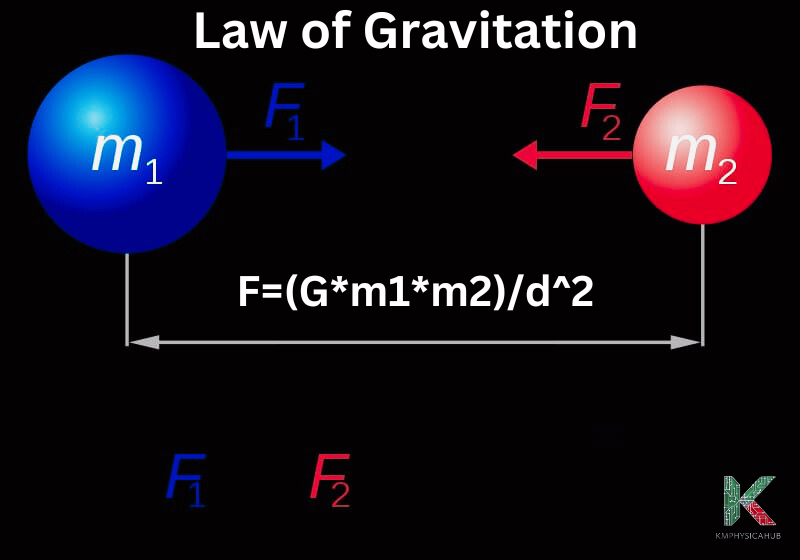
Law of Universal Gravitation and Principia Mathematica:
Isaac Newton’s more explicit work is called “Philosophiæ Naturalis Principia Mathematica,” in which he postulated his laws of motion and introduced the universal law of gravitation. This law asserted that, for any two real masses existing in the universe, they will always interact through a force that depends on either the product of the two masses or the square of the distance separating them.
Experimental Verification of the Law of Gravitation:
Newton included real-life experiences in his theories, for instance the widely known falling apple that helped him prove his theory on gravity. He also observed celestial bodies and their movements, thus, strengthening the possibility of his theory on the existence of gravity.
Three Laws of Motion:
Newton’s three laws of motion comprised a core parameter of his way of perceiving the world, or nature. These laws helped him define the connection between an object’s movement, the forces affecting it, as well as acceleration, and that was the foundation of his reflections on gravitation.
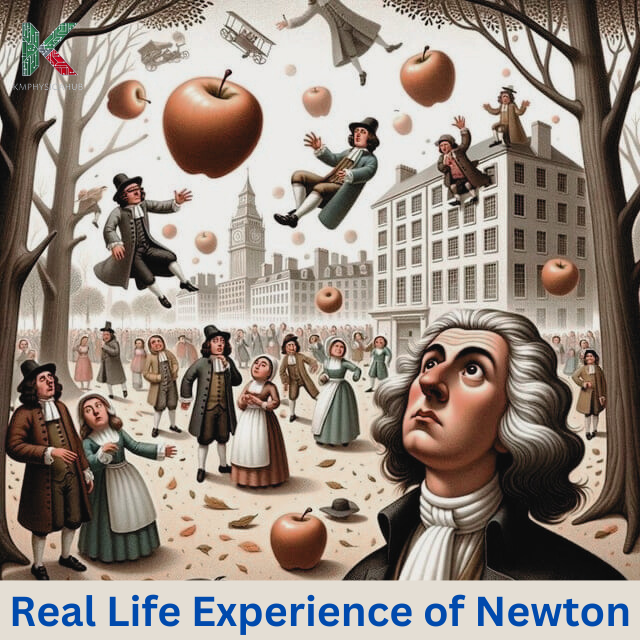
Mathematical Formulation of Gravity:
Newton presented a mathematical way of explaining the cause of gravity and it was new to the world at the time. Newton came up with equations that could measure gravitational force and employed calculus to solve problems of celestial mechanics that are complex to solve using other tools of mathematics of the time, paving the way for modern physics and mathematical analysis.
Influence on Scientific Thought:
Newton’s views of gravity were groundbreaking and changed the course of scientific advancements by stressing the principles of empirical evidence and mathematics. The latter presumed a new attitude to nature and knowledge, which Copernicus greatly contributed to through the establishment of the Scientific Revolution and the Enlightenment movement.
Comparison with Earlier Ideas of Gravity:
Newtonian gravity was in many ways a revolution in human thinking in comparison with pre Newtonian or even Galilean views of gravity. He also focused on the mechanical aspects such as measuring data, formulating equations and models, and generalization that distinguished his work from the earlier scholars.
Legacy and Enduring Impact:
Newton’s theory of universal gravitation remained the scientific theory that stood the test of time as it received approvals from succeeding generations of scientists. With his contribution to Physics and astronomy, it can be said that he would remain in the history of science.
Critiques and Limitations:
Even though Newton developed gravitation theory, which soon turned into probably the most successful theory of physics, the theory was not without certain criticisms. There emerged difficulties of explaining Newton’s Universal Law of Gravity at the largest and the smallest scales which gave rise to the formulation of the general theory of relativity.
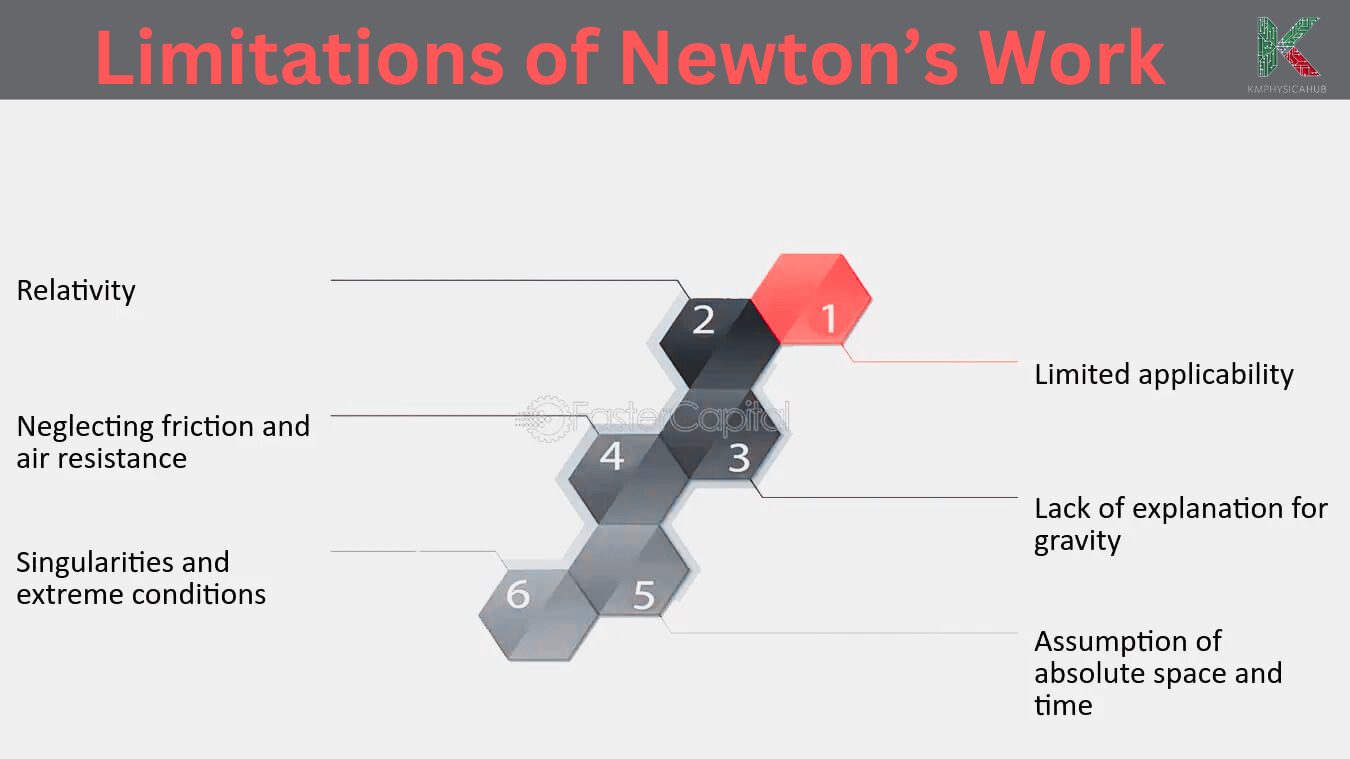
Applications of Newtonian Gravity:
The uses of Newton’s theory were not confined to theoretical physics but they were put into practice in engineering, space science, and astronomy. Some of the ideas from Newtonian gravity are still used in explaining existence and development of objects and gadgets.
Evolution of Gravity Studies:
Further developments in the gravitational theory have included the special theory of relativity by Einstein, as well as the more recent general theory of relativity that built on Newton’s gravitational ideas. While actually it is the Newtonian concept of gravity which has been improved in the modern physics by Einstein where gravity is not seen as force acting between two objects but is seen as curvature of spacetime.
Einstein’s Ideas about Gravity
As a cutting edge theoretical physicist of the modern age, Albert Einstein has brought about a drastic shift in our view of the physical cosmos by redefining what we understand about gravity. One of Einstein’s best-known theories was general relativity, which he midwifed in 1915, and remains a reality today that radically changed notions of gravity.
Einstein’s Early Years and Influences:
Einstein was born in a city known as Ulm in year 1879 in Germany and was an intelligent child right from his childhood. Following the works of others like Maxwell, Planck, etc., Einstein’s scientific milestones arose from questions regarding the nature of space, time and gravity.
The Road to General Theory of Relativity:
Thus, prompted by the search for a unified theory of gravity and motion, Einstein was able to build the basics of the special relativity theory in 1905. Within this context, the necessary groundwork was laid and Einstein proceeded to undertake a decade-long effort to finish his general theory of relativity.

Principles of General Relativity:
The foundation of general relativity is the equivalence postulate, which states that the acceleration and gravity are comparable phenomena. According to Einstein, unlike what Newton proposed, gravity is seen as the warping of the fabric of spacetime through mass and energy, thus introducing geometry into the interactions.

Einstein’s Field Equations:
Einstein’s field equations sum up the method of portraying the interaction between peripheral space-time and the mass-energy spread within it. These equations provide quantitative expressions in terms of earth’s gravitational field and the space-time structure which may be varying with time as well as distance.
Breakthroughs in Cosmology and Gravitational Waves:
General relativity has greatly influenced cosmology because it forms a fundamental underpinning for understanding the structure of the universe today. Furthermore, the subsequent prediction and detection of gravitational waves in 2015 provided conclusive empirical evidence of the theory of general relativity using fluctuations in spacetime fabric.
Celestial Mechanics and Black Holes:
The discovery of curved space-time that is the basis of Einstein’s theory has opened a new vision of the dynamics of celestial bodies and their interactions as seen from planets to stars and even galaxies. Furthermore, of all the things that Einstein’s equations forecasted was the existence of dark energy and dark matter such as black holes; the gravitational objects of extreme densities that have forces that deeply shape the universe.
Experimental Confirmation of General Relativity:
The several experiments and observations carried out over the more recent years proved the predictions of General relativity, for instance the bending of light around massive objects, the gravitational lensing and time dilation nearby massive bodies. These empirical validations have therefore placed a stamp on general relativity as one of the most significant success stories of modern physics.

Impact on Physics and Modern Science:
In this regard, one can note that the effects of general relativity do not only encapsulate theoretical physics but also apply to such branches as astrophysics, cosmology, and quantum gravity. New research and technological advancement directions have emerged from Einstein’s innovations to give people a concept of the universe that is extremely grand.
Contrasting Newtonian Gravity and General Relativity:
While Newton’s law of universal gravitation only deals with the force of gravity itself, general relativity explains gravity in a broader way in terms of spacetime. While Newtonian gravity remains good enough in most cases, general relativity is better in situations where the gravitational fields are intense and conditions are extreme.
Legacy of Einstein’s Theory of General Relativity:
Nowadays, general relativity is one of the most brilliant attainments in natural philosophy ever made, as well as an inspiration for modern physicists. The presence of Einstein’s theories in the current research and continuing existence of the concepts he developed only speak to his impact.
Critiques and Challenges:

However, there are few criticism on general relativity notwithstanding the fact that it has achieved a great deal of success. Problems including the search for the unification of gravity with quantum physics and questions that remain unanswered about the nature of singularities in black holes present current mysteries for theoretical physics.
Modern Implications and Future Directions:
The utilization of general relativity has had a significant impact on contemporary technology and scientific investigation, ranging from GPS systems and artificial satellites to the analysis of gravitational waves. As scientists continue to explore the complexities of space-time, new opportunities for further research in gravitational studies are revealed such as producing artificial gravity in spacecrafts, influenced by the profound contributions of Einstein.
Einstein’s legacy:
Albert Einstein’s everlasting mark on science is stamped by his inventive thinking on gravitation and the universe. His profound insights into gravitational theory have changed our view of the cosmos, leaving both scientists and laypeople awestruck.
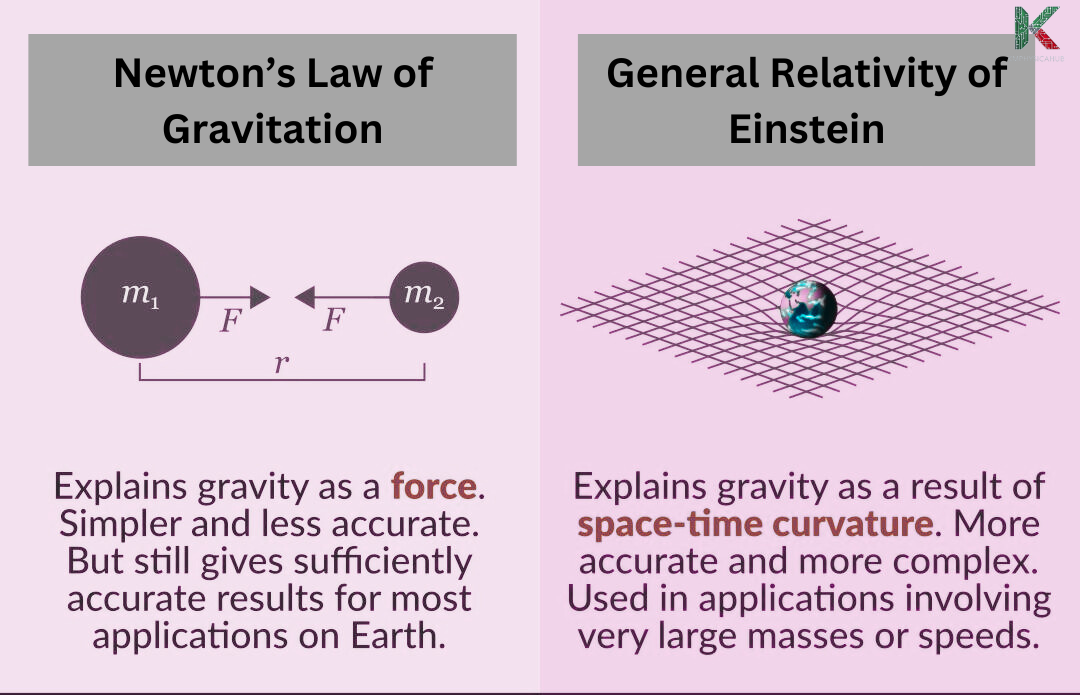
Conclusion:
The ideas of Galileo Galilei about gravitation not only reshaped but took man’s understanding of the physical world to new heights through the power of observation, experimentation, and daring thoughts. He furnished the bedrock for modern physics by rising against prejudices, conducting experience-based experiments, and encouraging the use of mathematics in studies related to natural phenomena. His courage to face opposition, doggedness for the truth, has kept on inspiring scientists and thinkers.
Newton’s ideas regarding gravity simply put forward the fact that some day, humans’ intellect and curiosity will give way to unveiling mysteries veiled by a universe still unknown to man. Now, such revolutionary ideas stand inspiring scientists and thinkers alike, showing just how timeless one’s contribution can turn out in enhancing our collective understanding.
Albert Einstein’s thoughts on gravity, packed in his theory of general relativity, show how smart humans can be. By going past usual ideas of space, time, and power, Einstein’s theory changed how we see the universe and paved the way for studying gravity’s effects on celestial bodies shaping modern physics and proving the strength of imaginative thinking and careful study.
FAQs
Q1: Was Galileo the first proposer of ideas about gravity?
Although Galileo was not the first to put forward theories regarding gravity, it is actually his experiments and observations that really did much to take this knowledge of a very important force one step higher.
Q2: What challenges did Galileo face due to his views on gravity?
Galileo’s advocacy for the heliocentric model and his views about gravity put him into conflict with the Church hence making him face trial and condemnation at the hands of Inquisition.
Q3: How Does Gravity Affect Time?
Gravity exerts a fascinating influence on time, causing it to decelerate in stronger gravitational fields. Time dilation is a term used to denote this phenomenon which is predicted by Einstein’s theory of general relativity. For instance, GPS satellites orbiting Earth experience slightly faster time due to weaker gravity, requiring adjustments for accurate positioning.
Q4: Can We Overcome Gravity?
While we can’t “overcome” gravity in the sense of switching it off, we can certainly counteract its effects. We achieve this through gene opposing forces like lift for flight and thrust for space travel. Powerful engines and aerodynamics allow aircraft to overcome gravity’s pull. Similarly, rockets also use tremendous power so as to achieve escape velocity thus breaking free from Earth’s gravitational pull. These require significant energy expenditure and advanced technology, highlighting the powerful influence of gravity.
Q5: What Are Some Common Misconceptions About Gravity?
Many misconceptions surround gravity! One common myth is that there’s no gravity in space. In reality, gravity exists everywhere, just weaker further from celestial bodies. Another misconception is confusing gravity with other forces like magnetism. While both exhibit attraction, they’re distinct phenomena. Lastly, some believe heavier objects fall faster, neglecting air resistance. Galileo proved that in a vacuum, objects fall at the same speed independent of their masses.
Q6: What are Gravitational Waves?”
Gravitational waves refer to wrinkles in space-time resulting from the acceleration of massive bodies as postulated by Einstein’s general relativity. These waves propagate at the speed of light and are extremely feeble thereby making them highly challenging to detect. Nevertheless, in 2015, for instance, Laser Interferometer Symbolic notation Gravitational Wave Observatory (LIGO) made an epochal discovery of the gravitational waves emitted when two black holes merged.